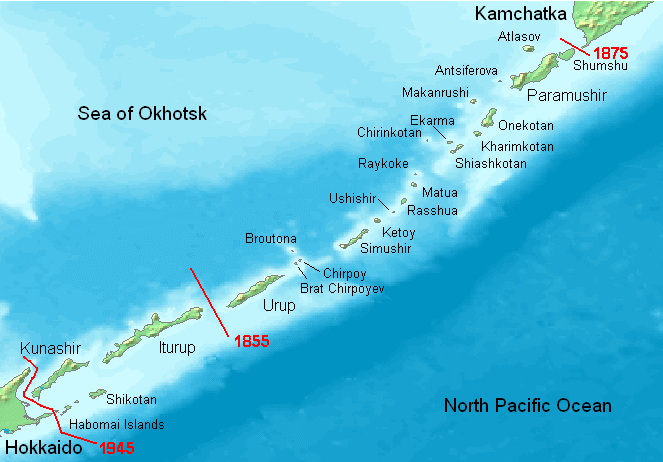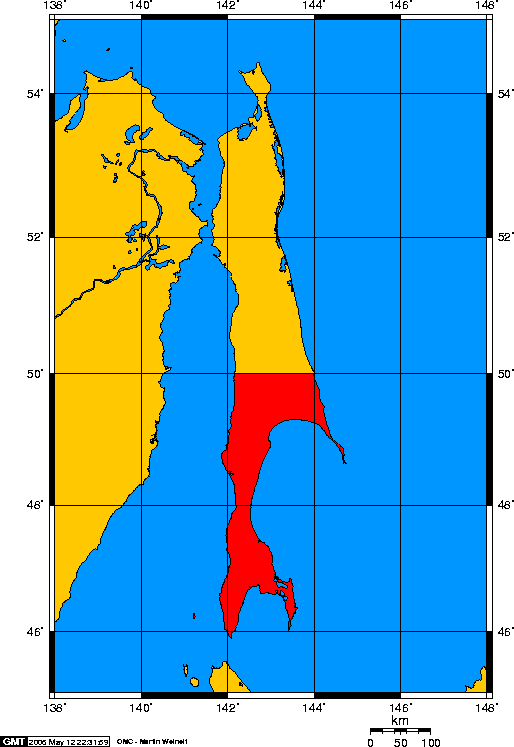|
Hokkaidō Development Commission
The , sometimes referred to as Hokkaidō Colonization Office or simply Kaitakushi, was a government agency in early Meiji Japan. Tasked with the administration, economic development, and securing of the northern frontier in what, at the time of establishment, was known as Ezo, it was established in 1869 and disbanded in 1882. Background During the Edo period, the Matsumae Domain was responsible for overseeing Japanese territory and trade with the local Ainu in Ezo (the area covered by the term extending beyond what is now Hokkaidō into Karafuto and the Chishima Islands), other than for two periods (1799–1821, and again from 1855), when the ''bakufu'' assumed direct control in the face of increasing Russian interest in the region. Following the Meiji Restoration, in the fourth month of 1868, the new government established the , a judicial office in Hakodate that subsumed the functions of the erstwhile Hakodate bugyō. History In the aftermath of the Battle of Hakodate, and fo ... [...More Info...] [...Related Items...] OR: [Wikipedia] [Google] [Baidu] |
Hakodate Bugyō
were officials of the Tokugawa shogunate in Edo period Japan. Appointments to this prominent office were usually '' fudai'' daimyō, but this was amongst the senior administrative posts open to those who were not daimyō.Beasley, William G. (1955). ''Select Documents on Japanese Foreign Policy, 1853-1868,'' p. 322. Conventional interpretations have construed these Japanese titles as "commissioner" or "overseer" or "governor." Hakodate is a port city on the southern coast of Hokkaidō island, separated from northern Honshū by the Tsugaru Strait. In 1779, the Tokugawa shogunate exerted direct control over Hakodate, and rapid development in the area soon followed. This ''bakufu'' title identifies an official responsible for administration of the port city of Hakodate and neighboring territory of Ezo. The ''bugyō'' were also directly responsible for the conduct of relations with foreigners in this region. The office was created in 1802. There were two men holding the title ... [...More Info...] [...Related Items...] OR: [Wikipedia] [Google] [Baidu] |
Prefectures Of Japan
Japan is divided into 47 prefectures (, ''todōfuken'', ), which rank immediately below the national government and form the country's first level of jurisdiction and administrative division. They include 43 prefectures proper (, ''ken''), two urban prefectures (, '' fu'': Osaka and Kyoto), one " circuit" or "territory" (, '' dō'': Hokkai-dō) and one metropolis (, '' to'': Tokyo). In 1868, the Meiji ''Fuhanken sanchisei'' administration created the first prefectures (urban ''fu'' and rural ''ken'') to replace the urban and rural administrators (''bugyō'', ''daikan'', etc.) in the parts of the country previously controlled directly by the shogunate and a few territories of rebels/shogunate loyalists who had not submitted to the new government such as Aizu/ Wakamatsu. In 1871, all remaining feudal domains ''( han)'' were also transformed into prefectures, so that prefectures subdivided the whole country. In several waves of territorial consolidation, today's 47 prefecture ... [...More Info...] [...Related Items...] OR: [Wikipedia] [Google] [Baidu] |
Godai Tomoatsu
was one of the Satsuma students of 1865 who were smuggled out of Bakumatsu period Japan to study in Great Britain. He returned to become Japan's leading entrepreneur of the early Meiji period. Early life Godai was born in Satsuma domain (in what is now part of Kagoshima city, Kagoshima Prefecture), and was sent by the domain to study naval science and technology at the ''Kaigun Denshujo'' in Nagasaki. At the outbreak of the Anglo-Satsuma War of 1864, he was appointed captain of the '' Tenu Maru''. Along with Matsuki Koan, he was taken prisoner by the Royal Navy when his ship was captured. He was chosen as one of 15 students to be sent to Great Britain to study at the University College, London in defiance of the Tokugawa bakufu's official national seclusion policy. Bakumatsu period In 1865 Godai made contact with Thomas Glover who steered negotiations with the Platt textile machinery giant in Oldham, Lancashire, England. This visit led to the establishment of the Kagoshima Mil ... [...More Info...] [...Related Items...] OR: [Wikipedia] [Google] [Baidu] |
Kodansha
is a Japanese privately-held publishing company headquartered in Bunkyō, Tokyo. Kodansha is the largest Japanese publishing company, and it produces the manga magazines ''Nakayoshi'', ''Afternoon'', ''Evening'', ''Weekly Shōnen Magazine'' and ''Bessatsu Shōnen Magazine'', as well as the more literary magazines ''Gunzō'', ''Shūkan Gendai'', and the Japanese dictionary ''Nihongo Daijiten''. Kodansha was founded by Seiji Noma in 1910, and members of his family continue as its owners either directly or through the Noma Cultural Foundation. History Seiji Noma founded Kodansha in 1910 as a spin-off of the ''Dai-Nippon Yūbenkai'' (, "Greater Japan Oratorical Society") and produced the literary magazine ''Yūben'' () as its first publication. The name ''Kodansha'' (taken from ''Kōdan Club'' (), a now-defunct magazine published by the company) originated in 1911 when the publisher formally merged with the ''Dai-Nippon Yūbenkai''. The company has used its current legal name since ... [...More Info...] [...Related Items...] OR: [Wikipedia] [Google] [Baidu] |
Kodansha Encyclopedia Of Japan
The ''Kodansha Encyclopedia of Japan'' is a comprehensive English-language encyclopedia first published in 1983 that covers a broad range of topics on Japan. History First published by Kodansha in 1983 followed by a supplemental volume in 1986. A two-volume updated edition, and a one-volume abridged (and updated) edition were published in 1993. The latter was the basis of the online version, which as of June 2010, is no longer available as a free-standing site. It can still be accessed through the JapanKnowledge database. Content The encyclopedia was created by both Japanese (680) and non-Japanese scholars (524) from 27 nations. Some of the advisors to the ''Kodansha Encyclopedia of Japan'' included Edwin O. Reischauer, Gerald L. Curtis, Ronald P. Dore, John W. Hall, Ezra Vogel, Akira Iriye, and Tsuru Shigeto. Japanese scholars produced 40 percent of the text, while foreign scholars wrote the remaining 60 percent. Japanese and American scholars wrote the majority of the ... [...More Info...] [...Related Items...] OR: [Wikipedia] [Google] [Baidu] |
Treaty Of Saint Petersburg (1875)
The Treaty of Saint Petersburg ( ja, 樺太・千島交換条約, Karafuto-Chishima Kōkan Jōyaku; russian: Петербургский договор) between the Empire of Japan and the Russian Empire was signed on 7 May 1875, and its ratifications exchanged at Tokyo on 22 August 1875. The treaty itself went into effect in 1877. Its terms stipulated that Japan cedes to Russia the part of Sakhalin island it then owned in exchange for the group of the Kuril Islands owned by Russia (between Iturup island and the Kamchatka Peninsula). Consequently, Sakhalin island as a whole became Russian territory, and the entire Kuril archipelago Japanese territory. The authentic text of the treaty is written in French. Differences with its Japanese translation contributed to the controversy on what constitutes the Kuril islands, claims to which Japan renounced in 1951 by the Treaty of San Francisco. The Treaty of Saint Petersburg (1875) is part of an ongoing, and long-standing, territorial ... [...More Info...] [...Related Items...] OR: [Wikipedia] [Google] [Baidu] |
Karafuto
Karafuto Prefecture ( ja, 樺太庁, ''Karafuto-chō''; russian: Префектура Карафуто, Prefektura Karafuto), commonly known as South Sakhalin, was a prefecture of Japan located in Sakhalin from 1907 to 1949. Karafuto became territory of the Empire of Japan in 1905 after the Russo-Japanese War when the portion of Sakhalin south of 50°N was ceded from the Russian Empire in the Treaty of Portsmouth. Karafuto was established in 1907 as an external territory until being upgraded to an " Inner Land" of the Japanese metropole in 1943. Ōtomari (Korsakov) was the capital of Karafuto from 1905 to 1908 and Toyohara (Yuzhno-Sakhalinsk) from 1908 to August 1945 when the Japanese administration ceased to function in the invasion of South Sakhalin by the Soviet Union after the surrender of Japan in World War II. Karafuto Prefecture was de facto replaced with Sakhalin Oblast, although it continued to exist de jure under Japanese law until it was formally abolished as a l ... [...More Info...] [...Related Items...] OR: [Wikipedia] [Google] [Baidu] |
Meiji (era)
The is an era of Japanese history that extended from October 23, 1868 to July 30, 1912. The Meiji era was the first half of the Empire of Japan, when the Japanese people moved from being an isolated feudal society at risk of colonization by Western powers to the new paradigm of a modern, industrialized nation state and emergent great power, influenced by Western scientific, technological, philosophical, political, legal, and aesthetic ideas. As a result of such wholesale adoption of radically different ideas, the changes to Japan were profound, and affected its social structure, internal politics, economy, military, and foreign relations. The period corresponded to the reign of Emperor Meiji. It was preceded by the Keiō era and was succeeded by the Taishō era, upon the accession of Emperor Taishō. The rapid modernization during the Meiji era was not without its opponents, as the rapid changes to society caused many disaffected traditionalists from the former samurai ... [...More Info...] [...Related Items...] OR: [Wikipedia] [Google] [Baidu] |


.jpg)


